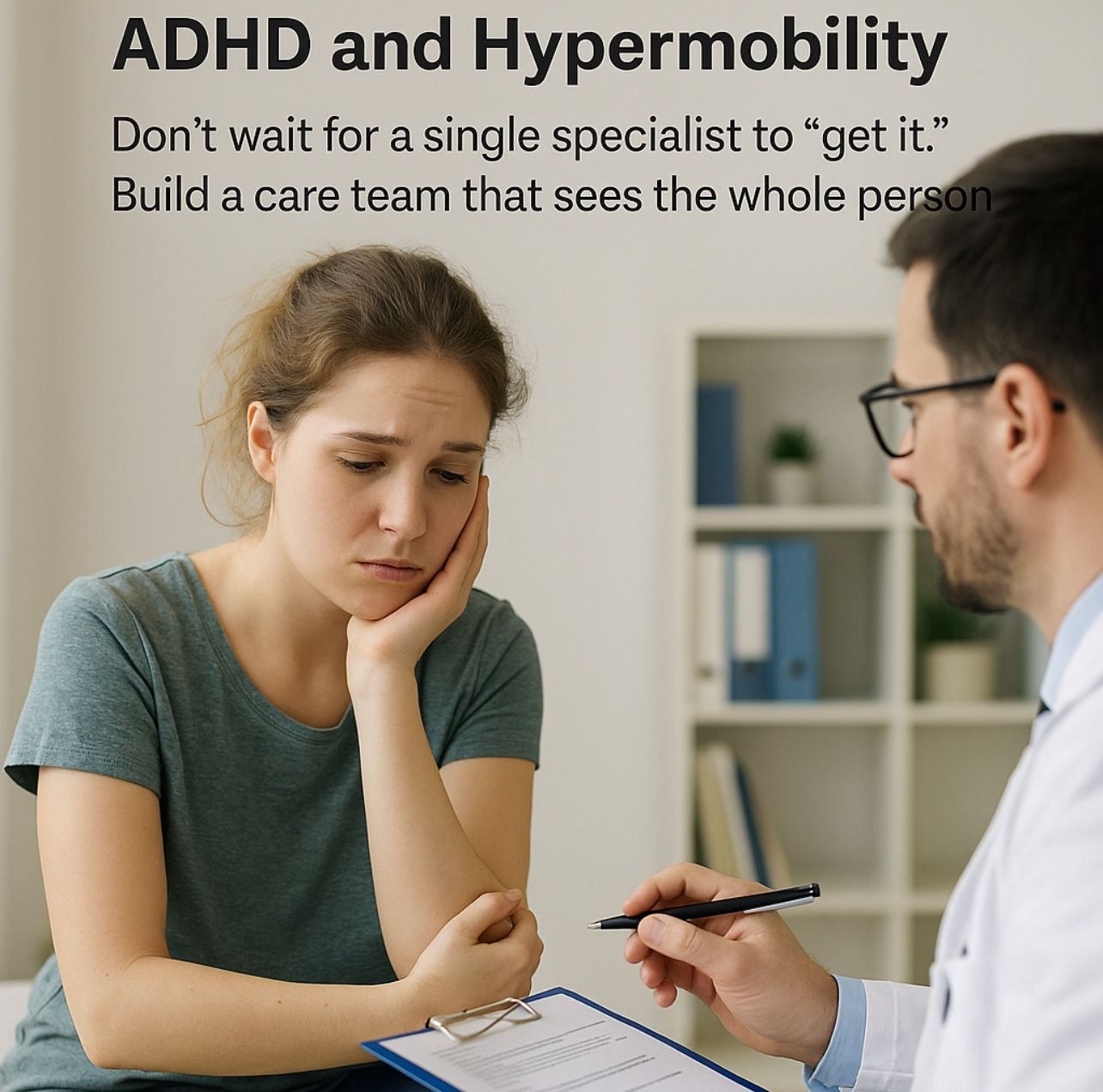Most doctors miss this connection and it costs patients years of confusion.
ADHD and hypermobility conditions like hEDS/HSD are deeply entwined, yet too often treated separately.
Here’s what the research and real lives tell us:
• Studies suggest more than 50% of autistic or ADHD adults show signs of hypermobility, compared with roughly 20% in the general population .
• Both ADHD and hypermobility appear tied to dopamine dysregulation: dopamine transporter issues in the brain hinder focus, while connective tissue conditions often implicate dopamine-linked autonomic systems .
• Dysautonomia, persistent pain, and fatigue are common in both worlds.
Yet clinics usually treat them in isolation.
I’ve known patients bounced between psychiatry and rheumatology for years.each specialist focused on their “own” issue. The overlap? Nobody claims it.
When both conditions coexist, symptoms merge:
1. Poor proprioception compounds hyperactivity.
2. Pain disrupts cognitive clarity.
3. Autonomic instability wrecks sleep, energy, mood.
Treating ADHD without addressing pain leaves chronic symptoms unchallenged. Treating joints without executive support misses the core dysfunction.
What works is integrated care:
• Physical therapists versed in joint protection who also coach ADHD strategies.
• ADHD medications strategically selected to support autonomic function.
• CBT that simultaneously tackles focus, fatigue, and emotional control.
This overlap isn’t rare and it needs visibility.
If you or someone you care for are navigating both ADHD and hypermobility:
→ Don’t wait for a single specialist to “get it.”
→ Build a care team that sees the whole person.
hashtag#ADHD_Hypermobility_MSK_Rheumatology
Read More on LinkedIn




